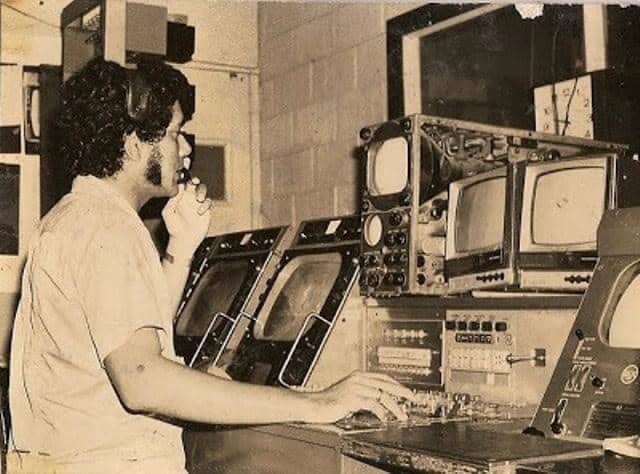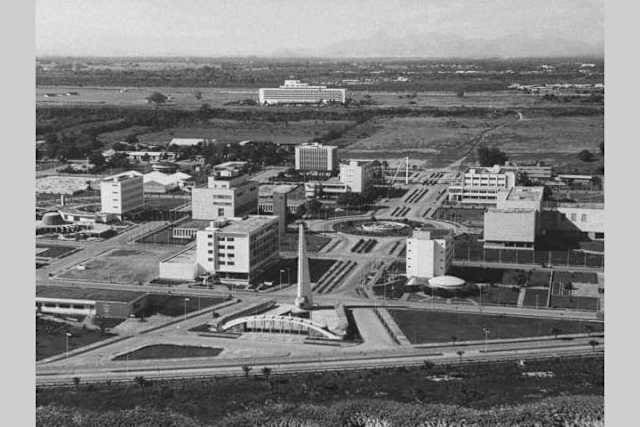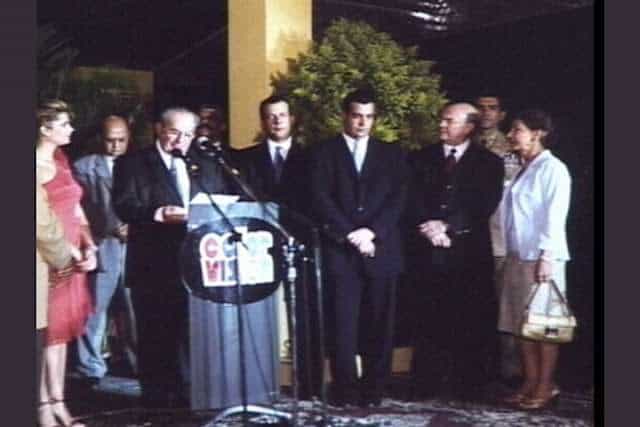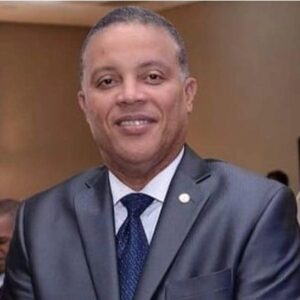
The Dominican Republic has always been at the forefront in terms of telecommunications.
In fact, it was the third country in Latin America in having the televisionthis innovative system that has revolutionized the world, due to the transmission and reception of images and sounds at a distance that simulate movements. Only behind Mexico and Cuba.
“One day the Dominicans connected with the entertainmentinformation and news with the arrival of the television. It arrived at 12 noon on August 1, 1952, and the first program to be screened was Romance Campesino, a production of the comedy group La Voz Dominicana.
The signal that was emitted through the channel 4 of the current State Radio Corporation and Television projected the performances of the protagonists of the comedy series Romance Campesino that it got as protagonists the characters Felipa and Macario, played by actress Toña Colón and actor Luis Mercedes Miches.
The program was presented by the announcer Maria Cristina Camilo, who in turn became the first dominican woman to appear as a presenter of a program television.
Prior to the installation of the television stationthe government of dictator Rafael Leonidas Trujillo had created The Voice of Yuna in 1943 in the city of Bonao, whose creator was José Arismendy Trujillo, becoming one of the first radio stations in Latin America.
A TT5-A transmitter with five kilowatts of video power and 2.5 kilowatts of audio power was used. In this way, Dominican Republic became the third country in Latin America, after Mexico and Cuba, to have television.
The equipment used was from the brand RCApurchased under the signature and purchase on behalf of Mr. José Arismendy Trujillo Molina, Mr. Abraham Santamaría and Mr. Robert, the latter of American nationality. Engineer JK Gram., of the RCAcame to the country to install the transmitter, together with other German and Polish technicians.

In 1953 the name was changed to The Voice of Yuna by the Palacio Radiotelevisor The Dominican Voicefrom where radio transmissions were made and television.
The first announcers, singers and comedians were formed in La Voz Dominicana since they established themselves there schools of singing and locution.
Since its founding, the television station official has gone through several stages and name changes, but has always occupied the same campuslocated at 8 Doctor Tejada Florentino Street, in the Villa Consuelo sector, in Santo Domingo.
In 1965, it was renamed Dominican Radio Television (RTVD), then, Dominican Televisiona name that was soon changed back to RTVD. On July 29, 2003, by law, it was renamed the State Corporation of Radio and Television. Television (CERTV), a name it retains to this day.
Today, the Lulio Moscoso Museum exhibits pieces, photographs and documentation that collect the history of the birth of the television Dominican. Its name pays tribute to the man who was one of the first radio technicians television station state-owned and which was at its service for more than 40 years.
Without a doubt, the installation of the television plantToday, this medium is travelling down paths never before imagined and the public receives, up to the minute, world and national events from the moment they originate.

Television private
- In 1959 the first one was installed channel private of the country, which was Rahintel, channel 7, with significant participation from Radhamés Trujillo.
- On November 30, 1969, Color Visión, the first television station, was installed in Santiago de los Caballeros. television station color in the country and the third in Latin America. It was then moved to Santo Domingo, where it has been operating since then through the channel 9.
- Later Teleinde was inaugurated, which broadcast from the channel 13. Other television station private, Telesystem, channel 11, was inaugurated in 1978 and the following year, Teleantillas, on channels 2 and 13.
One of the most significant innovations of recent years was the introduction to the country of the television by cable, from 1981, by the company National Cable TV.
Celebrations
Every anniversary of the arrival of the television to Quisqueya It was a reason for celebration. National and international artists were invited.
For the call Palace of Television Many artists of national and international renown paraded, including Joselito, Bobby Capó, Casandra Damirón, Elenita Santos, comedians Tin Tan and Pildorín, Elsa Miranda, Eva Garza, Libertad Lamarque, Leo Cortez, Miguel Aceves Mejía, María Victoria, Tony Aguilar, María Antonieta Pons, Kid Gavilán and Pedro Vargas.
“This year, the television station State Radio Dominican Television (RTVD) celebrates today the 72nd anniversary of the start of its broadcasts in the midst of a process of transformation led by its director Iván Ruiz.
Since its founding on August 1, 1942 in Bonao (The Voice of Yuna), RTVD has played a key role in promoting the national talent.
In a meeting with the press, conducted by Carlos Alfredo Fatule and Lisette Selman, the administration of the television stationheaded by the Chairman of the Board of Directors, Ellis Pérez, and its director Iván Ruiz, announced the release of the first original series created:
- “The Trinitarians” and the Mirror family“. According to its director, these productions mark a milestone in the television Dominican.
The first novelty of the night, which caused a great impact among the guests of different media, was the presentation of the series “La Mirror family“.
Produced in RTVD and created by Ivan Ruiz Co-created with Laura Guzmán, directed by Robert Cornelio and produced by Pedro López, the series addresses everyday situations of a real family, combining seriousness and humor.
It stars Johnnie Mercedes, his wife Clara Luz Lozano and their children Issac, Akuharella, Rria and Gaia Mercedes, and seeks to offer profound teachings through the representation of everyday events.

” was also presentedThe Trinitarians“, the first animated series in the Caribbean region, which represents a significant advance in the way RTVD narrates and preserves the history Dominican.
Luis Cepeda, veteran filmmaker, is the director of this series, with executive production by Iván Ruiz, developer of the project. “This series is based on the historical events of February 27, 1844, a crucial event in the history of Dominican sovereignty and independence,” said Luis Cepeda.
The first chapters of the series will be broadcast today from 7:00 pm (Familia Espejo) and 9:00 pm (The Trinitarians)”.



